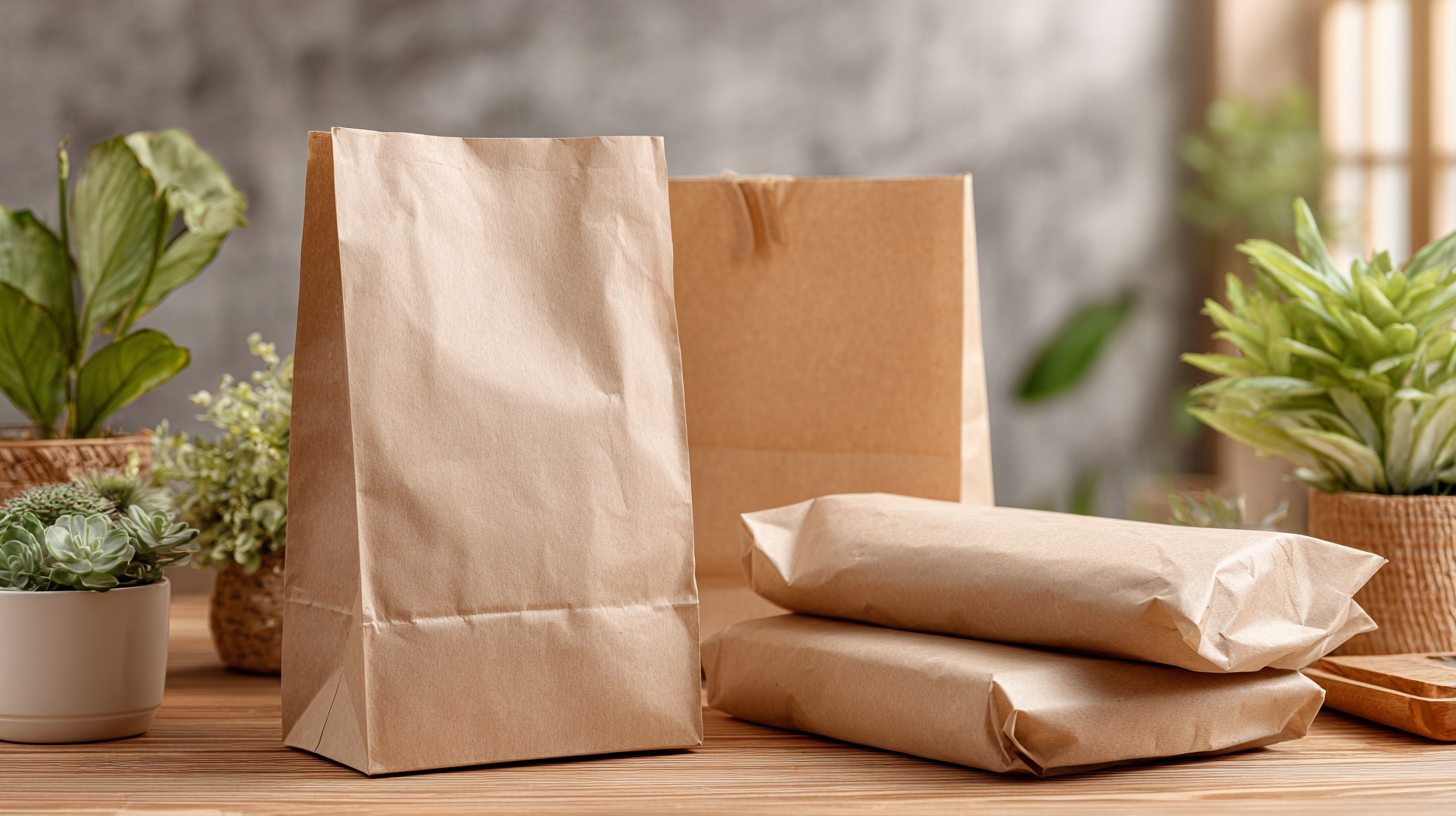In an era where environmental sustainability has become a cornerstone of responsible business practices, the demand for biodegradable shipping bags has surged significantly. According to a report by Smithers Pira, the global market for biodegradable packaging is expected to exceed $400 billion by 2024, driven by increasing consumer awareness and regulatory measures aimed at reducing plastic waste. This shift is not just a passing trend; as more consumers prefer eco-friendly options, companies are compelled to rethink their packaging strategies, making biodegradable shipping bags an essential part of their supply chain.
Biodegradable shipping bags offer a practical solution to the pressing issue of plastic pollution. With nearly 300 million tons of plastic produced each year, of which only a fraction is recycled, transitioning to biodegradable alternatives is critical. These innovative materials break down naturally, significantly reducing environmental impact when compared to traditional plastic. Furthermore, a study from the Ellen MacArthur Foundation highlights that shifting to biodegradable options could potentially reduce greenhouse gas emissions from plastic production by 30% by 2030. In light of these figures, businesses looking to align with sustainable practices must consider the integration of biodegradable shipping bags into their operations, setting the stage for a greener future.

Biodegradable shipping bags are becoming an essential component in sustainable packaging, offering numerous benefits for both businesses and the environment. One of the most significant advantages is their ability to decompose naturally within a short period, unlike traditional plastic bags that can take centuries to break down. This rapid degradation reduces landfill waste and pollution, helping to combat the environmental crisis.
In addition to their ecological benefits, biodegradable shipping bags often appeal to environmentally conscious consumers, enhancing a brand’s image and fostering customer loyalty. Companies that utilize these bags can communicate their commitment to sustainability, which is increasingly becoming a crucial factor in purchasing decisions. Furthermore, many biodegradable options are made from renewable resources, providing a more sustainable supply chain and reducing reliance on fossil fuels. By choosing biodegradable shipping bags, businesses can play a vital role in promoting eco-friendly practices while still ensuring their products are delivered securely and efficiently.
When searching for biodegradable shipping bags, it’s essential to consider the materials used in their production. Look for bags made from plant-based materials such as cornstarch, which offer a sustainable alternative to conventional plastic. These materials not only break down more efficiently in composting environments but also have a lower carbon footprint during manufacturing. Additionally, ensure the bags comply with industry standards for biodegradability, such as ASTM D6400 or EN 13432, to guarantee their environmental impact.
Another critical feature to consider is the bag's durability and strength. Biodegradable shipping bags should be robust enough to hold a variety of products without tearing or puncturing during transit. Assessing the thickness and tear resistance of the bags is vital, as these factors will determine how well they protect the items inside. Furthermore, user-friendliness is important; choose bags with easy-to-use sealing options or handles, enhancing the overall shipping experience. By focusing on these key features, you can make informed decisions that support sustainable packaging practices while still addressing practical shipping needs.
 Biodegradable shipping bags have emerged as a sustainable alternative to conventional plastic, leveraging various eco-friendly materials to minimize environmental impact. Among the most common materials used are plant-based bioplastics, such as polylactic acid (PLA) and starch blends. PLA, derived from renewable resources like corn starch, offers favorable compostability attributes but can require specific industrial composting conditions to break down effectively. Starch blends often integrate traditional polymers with biodegradable components, creating a balance of strength and sustainability.
Biodegradable shipping bags have emerged as a sustainable alternative to conventional plastic, leveraging various eco-friendly materials to minimize environmental impact. Among the most common materials used are plant-based bioplastics, such as polylactic acid (PLA) and starch blends. PLA, derived from renewable resources like corn starch, offers favorable compostability attributes but can require specific industrial composting conditions to break down effectively. Starch blends often integrate traditional polymers with biodegradable components, creating a balance of strength and sustainability.
Another promising material is compostable polyethylene, which is designed to break down in both industrial and home composting environments. It retains the qualities of traditional polyethylene while offering a biodegradable alternative. Additionally, recycled paper and cardboard are becoming increasingly popular, as they provide a recyclable option that reduces reliance on plastics. While they may not be as water-resistant as plastic counterparts, advancements in coating technologies enhance their durability and functionality. Each of these materials presents unique benefits and challenges, making it essential for businesses to assess their specific shipping needs in selecting the most suitable biodegradable option.
As sustainability continues to gain traction globally, the demand for eco-friendly shipping solutions is reshaping the packaging landscape in 2023. Recognizing this shift, leading brands are prioritizing biodegradable shipping bags that reduce environmental impact while maintaining functionality and durability. These innovative products are crafted from materials that break down naturally, thus minimizing the carbon footprint associated with traditional synthetic packaging.
Among the frontrunners in the biodegradable shipping solutions market are companies that not only meet consumer demands for sustainability but also align with overarching corporate responsibility goals. Their commitment transcends mere compliance, showcasing a proactive approach to circularity and waste reduction. As consumers become more conscientious about their choices, brands that incorporate biodegradable options are poised to lead the way, demonstrating that sustainable practices can coexist with commercial success in the ever-evolving world of packaging.
| Material Type | Size (inches) | Thickness (mil) | Biodegradability Duration | Certification |
|---|---|---|---|---|
| Corn Starch | 12 x 16 | 2 | 45-90 days | ASTM D6400 |
| PLA (Polylactic Acid) | 10 x 14 | 1.5 | 90-180 days | EN 13432 |
| Recycled Paper | 14 x 18 | 4 | 6 months | FSC Certified |
| Bagasse | 15 x 20 | 3 | 30-60 days | OK Compost |
| Jute | 16 x 26 | 5 | 6-12 months | GOTS Certified |
 Transitioning to sustainable packaging with biodegradable bags is a crucial step for businesses aiming to reduce their environmental impact. To start, it’s essential to assess your current shipping materials and identify areas where biodegradable options can be implemented. Begin with a small pilot program where you test biodegradable bags alongside your existing packaging. This will allow you to evaluate their performance in terms of durability and functionality without fully committing to a switch right away.
Transitioning to sustainable packaging with biodegradable bags is a crucial step for businesses aiming to reduce their environmental impact. To start, it’s essential to assess your current shipping materials and identify areas where biodegradable options can be implemented. Begin with a small pilot program where you test biodegradable bags alongside your existing packaging. This will allow you to evaluate their performance in terms of durability and functionality without fully committing to a switch right away.
Educating your team and customers about the benefits of biodegradable bags is equally important. Consider creating informative materials that outline how these bags break down more quickly than traditional plastics and help minimize landfill waste. Additionally, training your staff on the proper disposal methods for these bags can further enhance your sustainability efforts. By engaging customers through transparent communication about your commitment to eco-friendly practices, you not only build brand loyalty but also encourage a shared responsibility towards environmental stewardship.